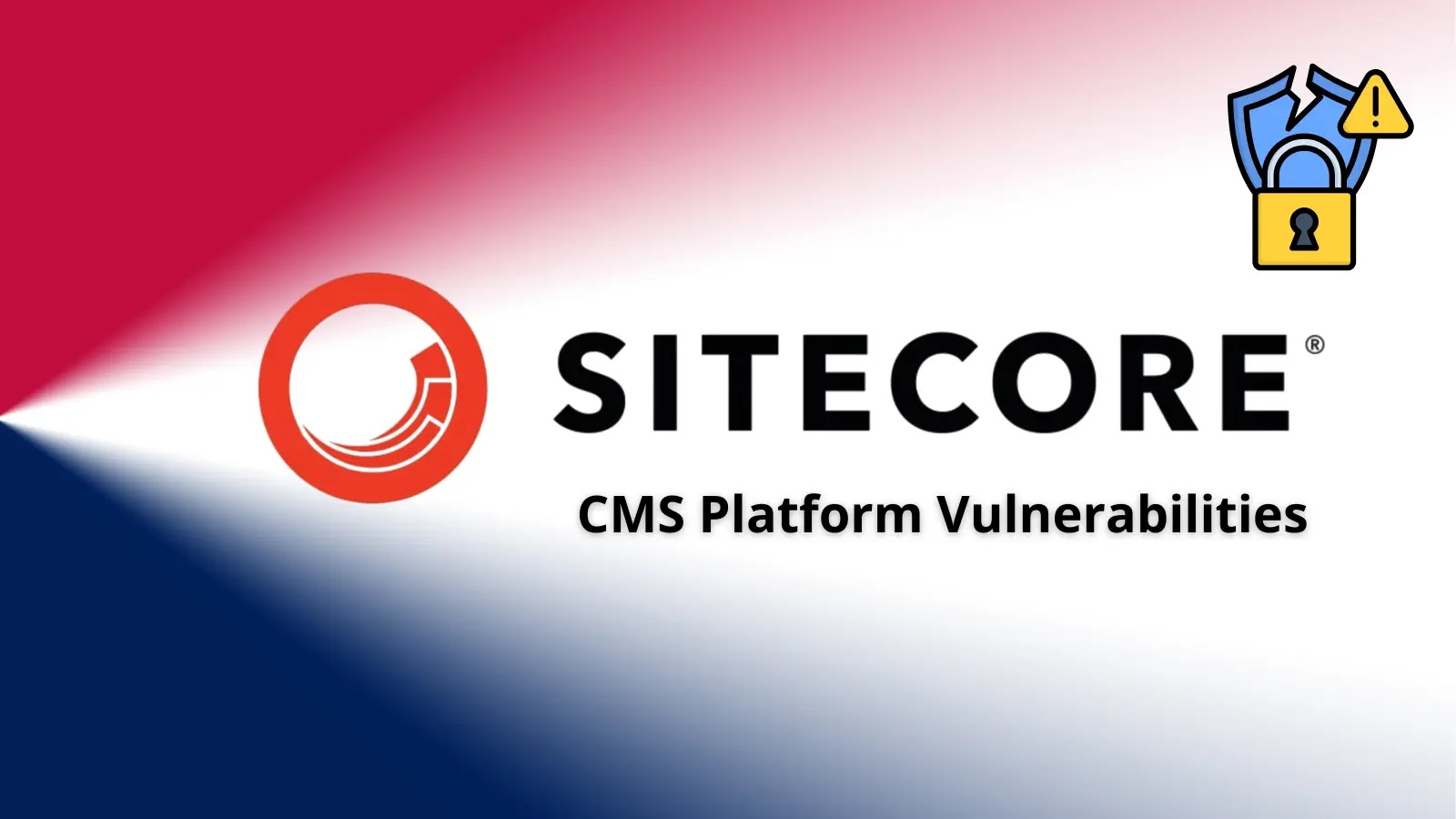
Sitecore CMS Platform Vulnerabilities Enables Remote Code Execution
Unmasking Sitecore Vulnerabilities: A Deep Dive into RCE Threats
The digital landscape is a constant battleground, and even the most robust platforms can harbor critical weaknesses. Recent discoveries have brought to light a series of severe vulnerabilities within the Sitecore Experience Platform, enabling sophisticated attackers to achieve complete system compromise through Remote Code Execution (RCE). As cybersecurity professionals, understanding these threats and implementing timely remediation is paramount to safeguarding sensitive data and maintaining operational integrity.
This analysis delves into the technical intricacies of these Sitecore CMS vulnerabilities, exploring how they can be exploited, their potential impact, and, crucially, the actionable steps organizations must take to mitigate the risk.
The Attack Chain: HTML Cache Poisoning to Remote Code Execution
The identified vulnerabilities in Sitecore are not standalone exploits but rather a sophisticated attack chain. Attackers leverage a combination of techniques, starting with HTML cache poisoning, to pave the way for remote code execution. This multi-stage approach makes detection and prevention challenging without a comprehensive security posture.
A key enabler for targeted exploitation is the exposure of the ItemServices API. This API, when exposed, allows attackers to enumerate critical cache keys and configuration details. Such information drastically streamlines the reconnaissance phase, enabling threat actors to tailor their attacks for maximum efficacy.
Key Vulnerabilities and Their Impact
While the full scope of vulnerabilities facilitating this attack chain is complex, one critical CVE stands out:
- CVE-2025-53693: HTML Injection Vulnerability. This CVE allows attackers to inject malicious HTML into the Sitecore platform. This injection is a foundational step in the attack chain, enabling cache poisoning and subsequently, the conditions necessary for RCE. The specifics of how this HTML injection is achieved within Sitecore’s architecture are critical for understanding the exploit.
The culmination of these vulnerabilities is the ability for an attacker to achieve Remote Code Execution. This means an unauthorized threat actor can execute arbitrary code on the underlying server hosting the Sitecore instance. The implications are severe, ranging from data exfiltration and intellectual property theft to complete system takeover, including the deployment of ransomware or backdoors for persistent access.
Remediation Actions and Mitigation Strategies
Proactive and immediate action is essential to protect your Sitecore installations from these critical vulnerabilities. Here are key remediation steps and best practices:
- Patching and Updates: Immediately apply all available security patches and updates released by Sitecore. Stay informed about official security advisories and ensure your Sitecore instances are running the latest secure versions. Regularly check Sitecore’s official security bulletin pages.
- Review ItemServices API Exposure: Assess the exposure of your ItemServices API. Implement strict access controls and consider limiting its availability to only necessary internal components or trusted IP ranges. Follow Sitecore’s best practices for API security.
- Cache Configuration Review: Scrutinize your HTML caching configurations. Implement robust validation and sanitization of all inputs that could influence cached content. Consider implementing content security policies (CSPs) to mitigate the impact of potential HTML injection.
- Web Application Firewall (WAF): Deploy and properly configure a Web Application Firewall (WAF) in front of your Sitecore instances. A WAF can help detect and block known attack patterns, including HTML injection attempts and suspicious API requests, before they reach your application. Regularly update WAF rulesets.
- Input Validation and Output Encoding: Ensure all user inputs are rigorously validated at the application layer. Implement proper output encoding for all data rendered to HTML to prevent cross-site scripting (XSS) and other injection attacks.
- Principle of Least Privilege: Enforce the principle of least privilege for all Sitecore users and service accounts. Limit permissions to only what is strictly necessary for their function.
- Regular Security Audits and Penetration Testing: Conduct frequent security audits and penetration tests on your Sitecore applications. These assessments can identify architectural weaknesses, misconfigurations, and potential attack vectors before they are exploited by malicious actors.
- Security Information and Event Management (SIEM): Integrate Sitecore logs with your SIEM solution. Monitor for unusual activity, failed login attempts, suspicious API calls, and any indications of compromise or HTML cache manipulation.
Tools for Detection and Mitigation
Various tools can assist in detecting vulnerabilities, scanning for weaknesses, and strengthening the security posture of your Sitecore environment:
| Tool Name | Purpose | Link |
|---|---|---|
| OWASP ZAP | Web application security scanner to find various vulnerabilities including injection flaws. | https://www.zaproxy.org/ |
| Burp Suite Professional | Comprehensive web penetration testing tool for vulnerability discovery, exploitation, and reconnaissance. | https://portswigger.net/burp |
| Nessus | Vulnerability scanner for identifying misconfigurations and known vulnerabilities in web servers and applications. | https://www.tenable.com/products/nessus |
| Snort/Suricata | Intrusion Detection/Prevention Systems (IDS/IPS) for monitoring network traffic for malicious activity and attack signatures. | https://www.snort.org/ / https://suricata-ids.org/ |
| Sitecore Experience Platform Security Guidelines | Official security best practices and configuration guides from Sitecore. | (Refer to official Sitecore documentation for your version) |
Conclusion
The discovery of critical vulnerabilities in the Sitecore Experience Platform highlights the continuous need for vigilance in cybersecurity. The sophisticated attack chain involving HTML cache poisoning and the ItemServices API, leading to Remote Code Execution, underscores the severe risks faced by organizations utilizing this powerful CMS.
By understanding the mechanics of these exploits and diligently applying the recommended remediation measures—including prompt patching, rigorous access control, robust input validation, and strategic use of security tools—organizations can significantly reduce their attack surface and protect their Sitecore environments from compromise. Staying informed about emerging threats and adopting a proactive security posture is fundamental to defending against these evolving risks.





